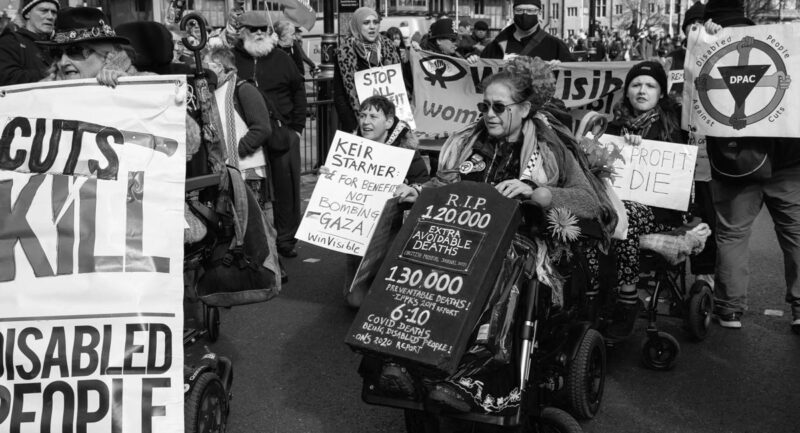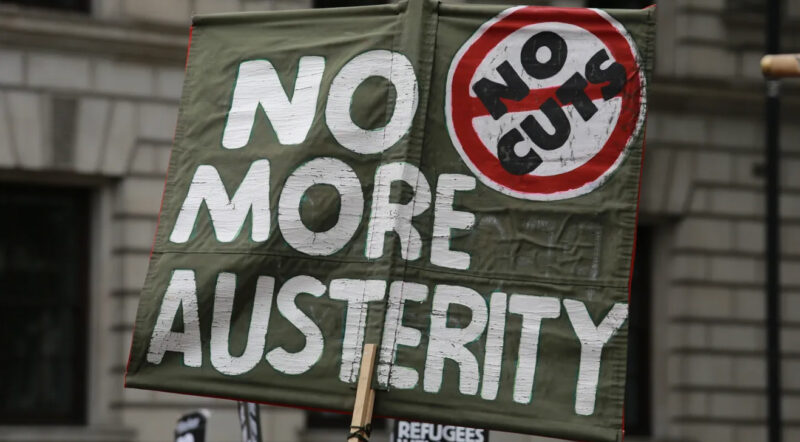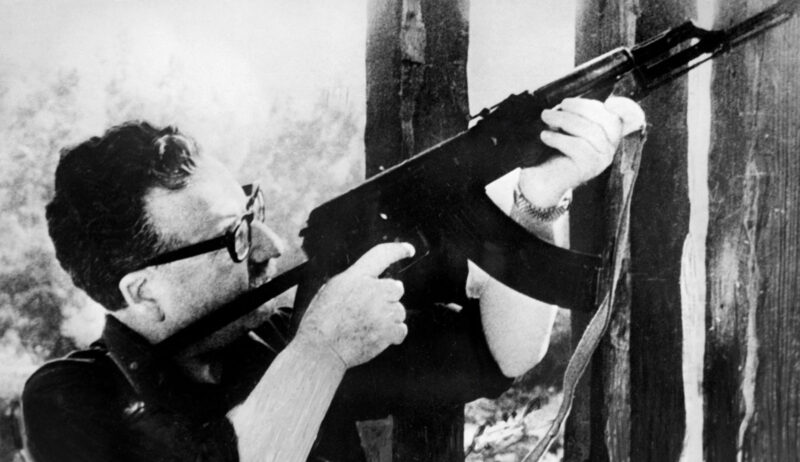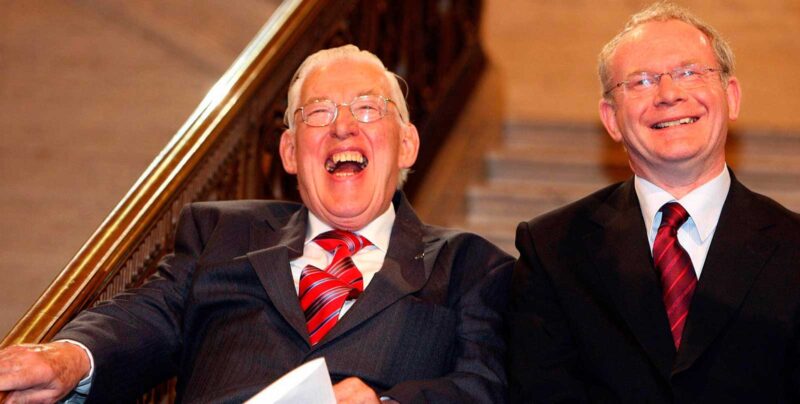May 1926: when workers stopped the country
AT A TIME when we are facing a major offensive on workers’ gains and the union movement, the 85th anniversary of the 1926 general strike is a good opportunity to review its lessons for us today. Dave Stockton explains why
 It’s not just an example of the power of mass workers’ action, but also shows the critical importance of leadership, and the necessity to build up an alternative rank and file controlled centre of power to the official structures of the trade union leaderships, whether right or left.
It’s not just an example of the power of mass workers’ action, but also shows the critical importance of leadership, and the necessity to build up an alternative rank and file controlled centre of power to the official structures of the trade union leaderships, whether right or left.
Here we look back at the heroism of the strikers and their leaders’ betrayal.
On 30 June 1925, the owners of Britain’s coal industry abruptly terminated all existing wage agreements with the 900,000 strong Miners Federation of Great Britain (MFGB) and unilaterally cut their pay. The response of the union and its recently elected militant secretary Arthur James Cook was the slogan: “Not a penny off the pay, not a minute on the day”.
The Trades Union Congress – which over the preceding year or so had moved to the left – announced that it would call solidarity strike action. Unprepared for a general strike, the Conservative government of Prime Minister Stanley Baldwin retreated. It announced a nine-month government subsidy to miners’ wages and a Royal Commission to discuss the future of the industry. The MFGB was pressing for all the pits to be nationalised.
The workers’ movement called this victory “Red Friday”. It demonstrated the power of workers’ solidarity. But instead of using the breathing space to prepare for the inevitable counterattack the union leaders did nothing. The government and employers at once began preparations.
The country was divided into 10 districts, each under a “Special Commissioner”. The Tories strengthened the army and police, creating a Civil Constabulary reserve made up of ex-soldiers. They set up the Organisation for Maintenance of Supplies (OMS) – a strike-breaking organisation to run the rail and road supply system. A State of Emergency would be declared, which suspended many constitutional liberties. In October 1925, a police raid resulted in the arrest of 12 of the top leaders of the Communist Party (CP) and their sentencing to between six and nine months in prison.
The lack of action from the TUC General Council was the more outrageous in that it contained a sizeable left wing. The miners’ leader, A J Cook, together with TUC president George Hicks and builders’ and engineers’ leaders A.A. Purcell and Alonso Swales enjoyed the support of many workers as they argued a militant line. But most of these lefts were, as Leon Trotsky commented, radical in words rather than deeds.
It was left to the rank and file, organised in the Communist-led Minority Movement, to prepare from below. On the eve of the general strike, the Minority Movement was able to hold a conference of delegates from 547 union bodies, representing 957,000 workers.
At this conference and throughout the general strike, the Communist Party correctly called for the setting up of local councils of action to organise and politically lead the strike. It also fought for workers’ defence of picket lines and strikers against the expected violence from fascists, upper class scab-herders and the state.
But while these policies were correct, the fatal weakness of the CP’s policy lay in its attitude to the union leaders. It did not warn workers of the unreliability of the lefts as it did warn of the treachery of the main right wingers like Jimmy Thomas of the rail workers.
The leadership of the Communist Party of the Soviet Union and the Communist International under Joseph Stalin and Nicolai Bukharin, in pursuit of their policy of building socialism in one country, had abandoned the practice of international revolution in favour of seeking allies in the reformist parties and trade unions of the imperialist countries. In Britain this took the form of the “Anglo Russian Committee” (ARC) – an alliance struck between the Russian and British trade union leaders.
Before and during the general strike the CP’s slogan – “All Power to the General Council” – disarmed and confused the militants, leaving them unprepared for the sell out. Nor was there any warning that the left leaders would not fight a betrayal by the right wing.
Trotsky had outlined an alternative to this disastrous policy and warned in advance that the left leaders would vacillate and betray. But with a campaign against “Trotskyism” in full swing, his warnings were either suppressed or construed as “sabotage” because they undermined the ARC.
This all meant that the CP found itself tied to the left wing of the bureaucracy precisely at the moment when it needed to lead the Minority Movement in offering an independent fighting policy that could win the strike.
Employers’ offensive
In March 1926 the Tories went onto the offensive. The Royal Commission proposed scrapping subsidies to the coal industry, a measure that would immediately result in massive wage cuts and job losses. If it went ahead it could pave the way to similar cuts in other industries.
A J Cook, Herbert Smith and the MFGB leadership rejected the proposals and declared themselves ready to strike. The TUC once again pledged to support the miners.
But open right-wingers on the General Council, like Jimmy Thomas and leaders more in centre, like Ernest Bevin of the Transport and General Workers Union, dominated the TUC’s negotiating committee. In an attempt to avert the crisis the union lefts effectively ceded leadership to these two, dispatching Thomas on his famous trip to Downing Street to “beg and plead” for a compromise. The support for a general strike was tied to the miners’ acceptance that the TUC would negotiate for them – a fatal error. Thomas feared that a general strike could lead to revolution – the last thing the reformists wanted. He even stated openly; “the state must win on an issue like this…”
But the miners were already facing a lock out by the mine owners when the printers at the Daily Mail refused to typeset an editorial “For King and Country” which declared: “A general strike is not an industrial dispute. It is a revolutionary move which can only succeed by destroying the government and subverting the rights and liberties of the people.”
Lessons of the Anglo-Russian Committee
The Anglo Russian Trade Union Committee was formed at a conference in London in April 1925, on the initiative of the Council of the Soviet Trade Unions with the official support of the British TUC. Prominent on the General Council at this time were the lefts, Alfred Purcell of the Furniture Workers, Alonzo Swales of the Engineers and George Hicks of the Building Trade Workers.
The Committee’s aims were to reunite the Amsterdam-based International Federation of Trade Unions and the Moscow Based Red International of Labour Unions, to wage a struggle against the preparations of the major world powers for a war with the Soviet Union, and to struggle against the ongoing capitalist offensive against the working class.
These were all entirely correct positions – indeed, developing these kinds of links, the international solidarity they involved, were crucial to protect the Soviet Union and to foster revolutionary developments outside its borders. But in its development the Committee increasingly resembled a non-aggression pact between two bureaucracies: the one that was slowly ensnaring the Soviet Union, and the British TUC’s hold on the working class.
The Committee lent a militant prestige to these leaders in the eyes of a leftward moving trade union rank and file. They also hovered around the fringes of the Minority Movement and the Communist Party praised them lavishly in its publications.
Yet in 1926 they played no role in opposing the right wing betrayal. If in its immediate aftermath the Soviet trade unions had broken off its relations with the TUC in the ARC this would have had a powerful impact in the British trade unions.
Instead it was not till September 1927 that the General Council itself broke up the Anglo-Russian Unity Committee in support of Baldwin’s breaking off of diplomatic relations with the USSR. Thus even the pretext of “defending the USSR” was shown to be an empty sham.
The government at once broke off negotiations, saying there would be no further talks unless the threat of a general strike was unconditionally called off.
The lock out and the pressure from below effectively forced the trembling TUC leaders to call the general strike.
Despite the weakness of the leadership the response from the ranks was immediate, solid and overwhelming. Yet even now the TUC did not call out all workers but a first wave of some 1.5 – 1.75 million workers: railwaymen, transport workers and dockers, printers, iron and steel workers. To coordinate the strikes at local level the TUC called for councils of action to be formed.
Workers’ power
In the absence of a printed press and the BBC’s total support for the government, local strike bulletins mushroomed. The councils gathered delegates from every type of workers’ organisation. Some of them became real centres of embryonic working class control, like the “soviets” which had taken power in Russia in 1917.
The most effective of them organised themselves into separate “Commissariats”. They distributed food and organised workers transport, issuing permits to move food, supplies, etc. They organised workers’ defence units to protect supplies and to stop police and the middle class and university student OMS strikebreakers attacking pickets. They produced trade union bulletins and papers to counter the propaganda of Winston Churchill’s anti-strike paper The British Gazette. The TUC’s daily paper, The British Worker, reached a circulation of one million by the end of the strike.
Mass pickets were organised to stop strike breaking at strategic workplaces and on the roads to the docks where the OMS, police or the army had taken over.
In the Fife coalfield, in Scotland, the trades council formed a workers’ defence corps. A member of the Fife council of action wrote: “The organisation worked like clockwork. Everything was stopped – even the railway lines were picketed… After police charges on mass pickets, the defence corps, which 150 workers had joined at the outset, was reorganised. Numbers rose to 700, of whom 400 marched in military formation through the town to protect the picket. The police did not interfere again.”
Throughout the country the strike was gaining strength. In contrast the union leaders were desperate to find a way out. General and Municipal Workers Union leader, Charles Dukes expressed their fears: “Every day the strike proceeded, the control and the authority was passing out of the hands of responsible executives into the hands of men who had no authority, no control.” A revolutionary situation was developing. The strike did not just call into question the survival of the government; it called into question the survival of the system.
Betrayal
What was urgently needed was for the Communist Party to actively push this development towards its natural conclusion – the formation of a revolutionary workers’ government. This would have entailed preparing the workers for seizing power and smashing the obstacles that stood in their way – namely the police, the OMS and the army.
But the Communist Party failed to challenge the hold Hicks and Purcell had over the most advanced workers. And as the strike continued, these lefts ran for cover behind the coat tails of Bevin and Thomas. They negotiated a deal with Lord Samuel, the chair of the Royal Commission, behind the backs of the miners’ leaders. It required the miners to accept both wage cuts and a lengthening of the working day.
When the MFGB refused, the TUC leaders set out to call off the strike on the basis of what they thought was their deal. It required only a High Court judge to declare that a general strike was not a trades dispute, thus opening unions up to prosecution by employers, to knock what wind remained in the union leaders’ sails out of them. This applied equally to the left leaders as it did to the right. There was, they thought, no alternative but – in the words of TUC secretary Walter Citrine – to “hand ourselves over body and soul to Baldwin.”
There was, of course, no deal that Baldwin would recognise and he repeated his refusal to negotiate until the general strike was called off. On 12 May, only nine days into the strike, the TUC leaders Pugh, Thomas and Bevin delivered their unconditional surrender to the Cabinet.
Lord Birkenhead, one of the Tory hard liners, remarked that the TUC envoys surrender was “so humiliating that some instinctive breeding made one unwilling even to look at them.”
The TUC lefts stayed silent. Even A. J. Cook, general secretary of the miners, refused to go over the heads of the TUC and call for continuation of the action from below. Yet the workers themselves showed no signs of wanting to retreat. On the day after it was called off 100,000 more workers came out on strike.
Thomas and Bevin soon found that the railway companies would not take back strikers without cuts in wages and victimisation of militants. They were forced to sanction national strikes to protest their members. Angry demonstrations denounced the TUC’s sell out. The Merseyside Council of Action tried to continue the strike but the Communist Party and the Minority Movement (despite the heroism of their militants at local level) did not try to organise a break from the surrender of the TUC and the continuation of the strike. After several days of tumult and confusion workers bitterly returned to work. In the end the miners were left to fight alone till October. Starvation and TUC enforced isolation led to a terrible defeat for them which it took decades to recover from.
The Communist Party too failed to learn from the defeat. Indeed Stalin’s faction rushed to cover it up. They criticised the right wing of the labour movement and even chided the left-wing allies but at the same time they maintained their alliance with the TUC strikebreakers in the Anglo-Russian Committee. They fiercely attacked Trotsky for his criticisms and the demand that the Russian trade unions should publicly break with the traitors in full view of the working class.
Lessons
The positive experience of the general strike – the impressive solidarity and high morale of the strikers, the self-organisation of working class communities, the fighting democracy of the councils and of action – can and should inspire us today. But the negative lessons are just as important.
The government recognised its political character, its character as a class struggle, indeed as civil war, and it organised accordingly. Warships were even sent to the Clyde and the Mersey. Civil rights were suspended, communists arrested and the middle classes mobilised.
But the general strike was defeated not because the forces of the state were stronger than the working class, nor because the rank and file gave in, but because the union leaders were faced with a choice: the survival of capitalism or the fight for workers’ power.
If the TUC had not surrendered or been able to enforce its surrender, then a fully revolutionary situation would have emerged. It was the duty of the Communist Party to prepare and mobilise for this with all its strength.
The Communist Party, existed to provide an alternative strategy to the union bureaucrats and at the critical moment to rally an alternative leadership for the struggle, treated the dispute as a trade union rather than a political conflict, subordinating itself and the Minority Movement to the left leaders who duly subordinated themselves to the right. To no one’s surprise the right surrendered to Baldwin and the Tories.
Trotsky accurately summed up the situation: “The entire present ‘superstructure’ of the British working class in all its shades and groups without exception is an apparatus for putting a brake on the revolution.”
The defeat of the general strike and the miners was a massive set back for the British workers. Thousands of militants were victimised and wages slashed. General strikes were outlawed. The unions lost millions of members as the whole movement retreated after this strategic defeat of the working class.
The conclusion that the union leaders drew was “never again”. But a general strike is not simply a tactical option to be used or not according to taste but something that was forced by the actions of the ruling class.
Leadership
The main lessons of 1926 is that it shows how a general strike can certainly be necessary for victory when faced with a decisive offensive on the working class, but that it won’t in itself be sufficient. Taking hold of the opportunity such a mass strike presents, however, requires firm and unflinching leadership along with democratic control of the movement from below.
Building up rank and file organisation, that firmly controls the movement – taking it out of the hands of the bureaucratic “superstructure” Trotsky condemned as the dead hand on the revolution and putting it in the hands of the workers – is crucial to victory. We can march with them when they fight but must be ready to continue the struggle and oust them when they betray.
Britain’s General Strike is also a magnificent example of the revolutionary power of the working class.
It shows that in a critical conjuncture, like the one that developed in 1926, the contradictions inherent in the capitalist system are stretched to breaking point, and at this moment greater tasks are posed – unless the workers go forward to seize power, then they can be thrown backwards into defeat and demoralisation. Next time an opportunity like this presents itself, communists must learn the lessons of 1926 and seize it with both hands.






